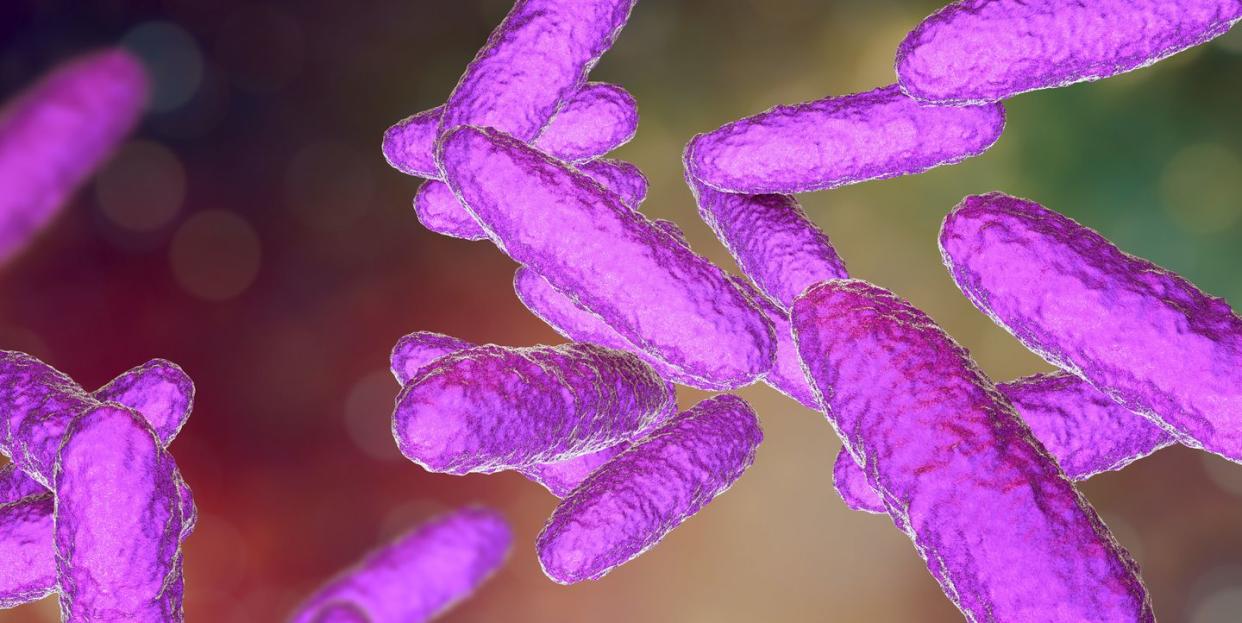You're Probably Curious About Donovanosis, the 'Flesh-Eating' STI That's Getting Attention

A rare, ‘flesh-eating’ sexually transmitted infection is getting plenty of attention after doctors suggested it’s becoming more common in the U.K.
Shree Datta, M.D., from MyHealthCare Clinic told The Independent that the STI donovanosis, which causes “beefy red” ulcers, is “becoming more common on these shores.” Worth noting: Data from Public Health England shows that there were only 30 reported cases of donovanosis in England in 2019.
The STI also caught fire on TikTok, where surgeon Karan Raj said in a now-viral video that the increase in cases in the U.K. is “terrifying.”
https://www.tiktok.com/@dr.karanr/video/7022671507700714758?lang=en&is_copy_url=1&is_from_webapp=v1
While recent reports about the virus have centered around the U.K., it’s only natural to have questions about whether donovanosis can impact people in the U.S. Here’s what you need to know about the STI that has everyone talking.
What is donovanosis?
Donavanosis, aka granuloma inguinale, is a disease caused by the bacterium Klebsiella granulomatis that causes ulcers around your genitals, according to the Centers for Disease Control and Prevention (CDC). The disease is chronic and relapsing, meaning it can keep coming back in people who are infected.
Donovanosis is mostly spread through vaginal or anal sex, although it can sometimes spread during oral sex, according to the U.S. National Library of Medicine.
The disease “rarely” shows up in the U.S., the CDC says, but sporadic cases have cropped up in Australia, India, South Africa, and South America in the past.
How common is donovanosis in the U.S.?
There are about 100 cases reported each year in the U.S., the U.S. National Library of Medicine says. Most of these cases are people who recently traveled to or are from places where donovanosis is common, though.
What are the symptoms of donovanosis?
Symptoms of the disease can show up anywhere from a week to 12 weeks after someone is infected, the CDC says. Symptoms can include the following, per the U.S. National Library of Medicine:
Sores in the anal area
Small, beefy-red bumps on the genitals or around the anus
Raised, beefy-red, velvety nodules called granulation tissue
Loss of skin color on the genitals and skin around them
Donovanosis moves slowly and destroys genital tissue as it spreads, the U.S. National Library of Medicine says. It can also spread to the lower abdomen and thighs, according to the CDC.
While donovanosis sounds freaky, it’s actually not painful, says William Schaffner, M.D., an infectious disease specialist and professor at the Vanderbilt University School of Medicine. “The ulcers are painless and, while they bleed readily, there are no systemic symptoms, so you don’t feel bad,” he says. “You just have this thing down in your groin.”
Even though donovanosis has been described as a flesh-eating STI, it’s not quite as gruesome as it sounds, explains Thomas Russo, M.D., professor and chief of infectious disease at the University at Buffalo in New York. “There is a great fear factor surrounding this but, at the end of the day, it’s an ulcerative sexually transmitted disease,” he says. “There are others like this as well, such as syphilis. This isn’t going to be like the zombie apocalypse where parts suddenly start falling off.”
How is donovanosis treated?
Doctors will typically need to do a clinical exam, says David Cennimo, M.D., assistant professor of medicine- infectious disease at Rutgers New Jersey Medical School. “We do not have good diagnostic tests,” he points out. However, doctors may take a biopsy or skin scraping of one of the ulcers to try to rule out more common conditions like syphilis or herpes, Dr. Schaffner says.
Once a diagnosis is made, the patient will be put on antibiotics like azithromycin, doxycycline, ciprofloxacin, erythromycin, and trimethoprim-sulfamethoxazole, the CDC says. “Healing can take weeks,” says infectious disease expert Amesh A. Adalja, M.D., a senior scholar at the Johns Hopkins Center for Health Security.
How concerned about donovanosis should people be?
Experts say people in the U.S. shouldn’t panic over this. “This is not really something people in the United States should be concerned about,” Dr. Adalja says. Dr. Schaffner agrees. “It’s not easily transmitted—it usually requires numerous sexual encounters before somebody can pass it on to someone else,” he says. “It’s also very rare in the U.S.”
But Dr. Russo says that all the attention on donovanosis right now is just a good reminder to practice safe sex. “This should be a wakeup call for people to have appropriate behavior and take appropriate precautions such as condom use,” he says. Dr. Cennimo agrees, adding, “safer sex practices—especially condom use—will help mitigate the risk of this infection.”
You Might Also Like

